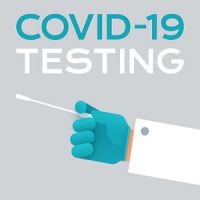When the coronavirus disease (COVID-19) pandemic first appeared in China, initial reports revealed that the virus primarily infected the lungs. The majority of patients who developed symptoms presented with pulmonary symptoms like chest discomfort and shortness of breath. Besides pulse oximetry, the most common imaging test in these patients was a chest x-ray. Since then, many reports have appeared indicating that a CT scan of the lungs is far superior to the chest x-ray as it offers much more detail about the disease.
Unfortunately, a CT scan is not practical; not only is it time-consuming, expensive, and labour-intensive, there is always the risk of transmission of the virus to healthcare workers. It is also a difficult procedure to perform on patients who are on a ventilator as it takes time and effort to move the patient and take them to the radiology suite for a CT scan. The potential for virus transmission is also very high in such situations.
To better address these issues, some experts recommend the use of a portable chest x-ray. But the important question is: is this imaging test sensitive enough to detect the lung pathology caused by the coronavirus?
In this study, researchers undertook a study from February 20 till March 20 in 229 intensive care unit patients who were mechanically ventilated. A total of 542 mobile chest x-rays were performed. The patient age range varied from 24-95 years, 147 were males, and 82 were females.
Results
The type of comorbidity in the 229 patients revealed underlying disease in 165 (72%), hypertension (31%), heart disease (13%), COPD ( 12%), and malignancy in 11%. As of March 30, 95 (41%) of 229 patients had died, and 134 (59%) survived. Among them, 58 were discharged, and 76 were still in the hospital.
There were 95 patients who did not survive. Fifty-eight patients were discharged, 35 required invasive ventilation, 27 required non-invasive ventilation, and 14 patients were managed with high flow oxygen. The chest x-ray revealed the following pathologies:
Pneumothorax 16 (7%)
Pleural effusion 53 (23%)
SubQ emphysema 4 (2%)
Intrapulmonary cavity 2 (1%)
Follow up x-rays revealed progression of disease in 119 (38%), no changes in 57 (18%) and improvement in 137 (44%). Extensive pneumonia was seen on the initial chest x-ray in all patients. Other findings in the chest x-ray include pneumothorax (7%) and pleural effusion (23%). Rare findings included hiatal hernia, subcutaneous emphysema, and intrapulmonary cavity. All patients who developed pneumothorax died. When the follow-up chest x-rays were compared with the initial x-ray, an increase in consolidation was visualised in 119 patients, while no changes were seen in 57 and improvement in 137 patients.
Among non-survivors who had a chest x-ray after the initial imaging study, progression was seen in 53 (96%) of patients. Among survivors, 118 patients had follow up x-rays, which showed progression in 26%, but improvements started to appear later.
Conclusion
In this study, physicians found that the mobile chest x-ray was of adequate quality for the diagnosis of pneumonia and pneumothorax in severely ill patients. Although the information obtained was less comprehensive compared to a CT Scan, the mobile chest x-ray was able to detect pleural effusions and pneumothorax and allowed the clinician to follow the progression of pneumonia. Hence, the portable chest x-ray may be simple, but it is a reliable method of evaluation of critically ill patients with COVID 19 who cannot undergo a CT scan.
Source: European Radiology
Image Credit: iStock



























